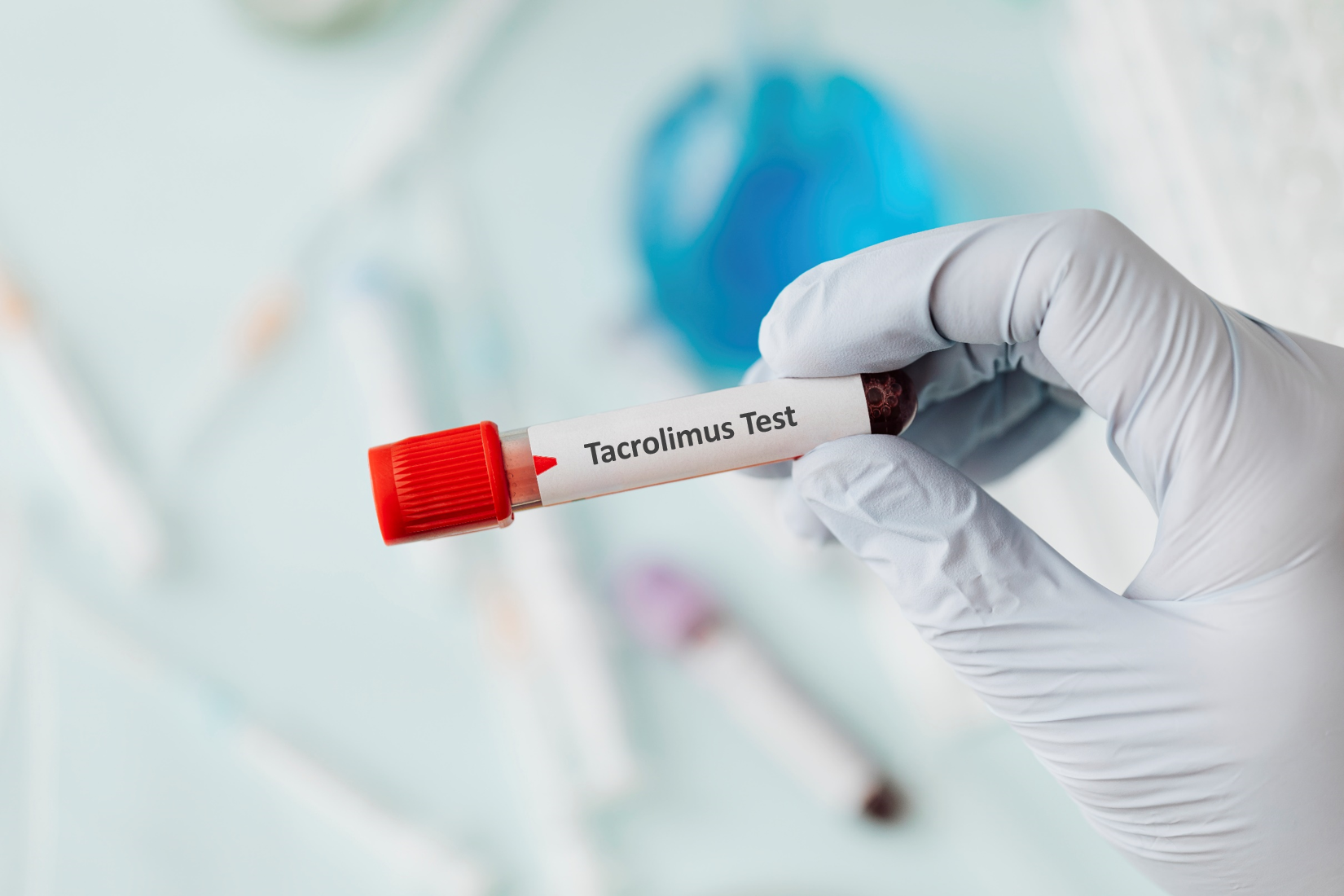
More about Tacrolimus
The Tacrolimus blood test measures the amount of Tacrolimus in the blood. The test is used to understand whether Tacrolimus levels in the blood have reached the optimal therapeutic levels and maintained below toxic levels.
Other names: TAC
Tacrolimus is an immunosuppressive drug. This is given either orally or intravenously to patients who have undergone an organ transplant. Tacrolimus is administered to limit the immune response so that the new organ is not rejected by the body.
Why Tacrolimus Test?
The test is ordered post 12 hours of the first dose of Tacrolimus and immediately prior to the next dose. After taking the dose, blood levels gradually rise and peak within 2-3 hours and slowly drop. When a blood measurement is taken after 12 hours, the levels are its lowest.
It is important to maintain a narrow therapeutic range as high levels of dose can lead to toxicity and complications like bacterial, viral or fungal infections as immune response is suppressed. High levels of the drug can also cause kidney damage and especially important in kidney transplant and allows to distinguish if there is a kidney rejection or kidney damage.
Who should get tested for Tacrolimus?
The Tacrolimus test is ordered more frequently at the beginning of the therapy to establish a dosing regimen. Once the dose is established, testing frequency may come down. Optimal tolerance level of the drug is established. Levels will be continued to be monitored as long as a patient is on the drug.
Your doctor will decide the time of the test and your regimen basis your test results. Transplant patients are required to be on Tacrolimus for a lifetime and hence testing for Tacrolimus becomes routine for someone who has undergone a transplant.
Reference values for Tacrolimus
Patients attain an optimal response to the drug when the trough blood concentration is in the range of 5.0-20.0 ng/mL. As organ function stabilizes after transplant, dose is frequently reduced to achieve steady state through Tacrolimus concentration in the range of 4.0-10.0 ng/mL for liver transplant, 6.0-12.0 ng/mL for renal transplant, 10.0-18.0 ng/mL for pancreas transplant and 10.0-20.0 ng/mL for bone marrow transplant.
Interpretation
Your Doctor will help you to interpret the results. The following drugs are known to effect tacrolimus concentration by either increasing absorption or decreasing clearance or both. Drugs that may increase tacrolimus concentrations include: Cyclosporine, Calcium channels blockers, Antifungal agents, macrolide antibiotics, and gastrointestinal prokinetic agents.
Drugs that may decrease tacrolimus concentrations include: Anticonvulsants, Antibiotic such as rifampin and rifabutin. Hence it is recommended to correlate the results with complete clinical history of the patient. The recommended therapeutic ranges apply to trough specimens, which are collected just before the next dose. Blood collected at other times will yield higher results.
